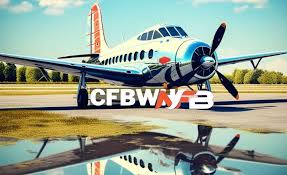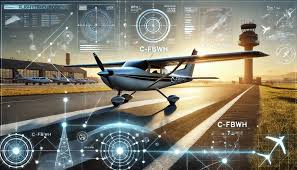Table of Contents
- Introduction to CFBWH (Customized Fly By Wire and Hybrid) Technology
- History of CFBWH and its Impact on Aviation Industry
- Advancements in CFBWH Technology
- Benefits of CFBWH for Airlines and Passengers
- Applications of CFBWH in Other Industries
- Challenges Faced by CFBWH Technology
- Future Outlook for CFBWH in the Aviation and Technology Sectors
- Conclusion
- FAQ:
Introduction to CFBWH (Customized Fly By Wire and Hybrid) Technology
CFBWH: As is agreed everywhere, innovation is critical to aviation. Aviation has quickly adopted one of the latest technologies: CFBWH—Customized Fly By Wire and Hybrid.
This innovation incorporates sophisticated electronic control systems into hybrid systems to enhance passengers’ safety, operating efficiency, and comfort during flight.
But what does that mean for the business models of airlines and passengers? When you begin to get into the nitty-gritty of CFBWH technology, you will see how it has evolved over the years and how it can be extended beyond aviation.
Fasten your seatbelts because this paper will take you on tour, explaining why CFBWH provides an exceptionally compelling case as one of the quiet revolutionaries shaping the aviation industry today!
History of CFBWH and its Impact on Aviation Industry

CFBWH, or Customized Fly By Wire and Hybrid, was born out of the necessity to concisely achieve design and operational goals.
The problem originated in earlier advancements in computerized flight control systems, which fundamentally changed how planes were built and used.
When commercial aviation expanded in the last third of the 20th century, classical mechanical handling systems could not provide sufficient reliability and performance.
CFBWH was created to solve this problem by enabling digital command control of flight inputs instead of using pulleys and wires.
This technology permitted manufacturers to reduce aircraft’s overall weight and fuel consumption. Airlines saved money by having lower operating costs and better passenger amenities.
In addition, CFBWH proved its worth in advancing the field of automation.
This, in turn, made it possible to operate under more severe flights and adverse weather.
The CFBWH did not just repair how planes move in the air; it transformed the way the whole airline industry operates worldwide.
Advancements in CFBWH Technology

The Customized Fly-by-Wire and Hybrid (CFBWH) integrated system is changing quickly.
Recent developments have improved the design and fabrication of more responsive and efficient aircraft control systems.
The engineers are placing algorithms within the control system that can adapt to the circumstances of the flight.
This adaptability minimizes the occurrence of turbulence during flights.
Furthermore, thinner-walled constructions minimize the aircraft’s weight without compromising its aim strength.
The designed approach combines the CFBWH approach with these materials to enhance fuel efficiency.
Artificial intelligence is also essential in this area. AI-based analytics help understand performance parameters and choose the most optimal route around the city to reduce expenses.
These innovations improve safety and promote green initiatives within the aviation industry.
With time, CFBWH active control system technology is expected to bring forth a new revolution in air travel.
Benefits of CFBWH for Airlines and Passengers
The introduction of CFBWH technology will benefit both airlines and passengers. One advantage of Customized Fly-by-Wire for airlines is that it is easier to operate Hybrid systems.
These highly developed systems allow an aircraft’s performance to be managed precisely, thus reducing fuel consumption and expenditure.
Better technology makes passengers less likely to complain about bumpy planes.
CFBWH increases the stability of the aircraft, reducing discomfort in the cabin during turbulence.
However, advanced maneuverability makes it possible to respond swiftly to changes circumnavigating constraints.
Moreover, CFBWH technology also helps decrease the noise impact during the aircraft’s vertical flight phases: takeoff and landing.
This also benefits travelers since it reduces disturbances even more to the people around the airports.
Using the CFBWH technology, an airline can constantly change its route while operating in real-time.
This flexibility helps avoid excessive time and waiting, which is a bonus to passengers who cannot afford to waste any time waiting to travel.
Applications of CFBWH in Other Industries
Turbofan technology isn’t limited to aircraft only. Its advanced Rubik’s Cube-like configurations have found other applications as well.
Regarding automobiles, the first thing CFBWH approves of is vehicle control systems.
These systems enable most methods to enhance safety and driving experience through optimal steering and braking capabilities to a certain extent.
CFBWH was also found to be externally applicable in manufacturing. This technology is now used by automated equipment in the manufacturing sector to improve productivity.
It effectively integrates modifications into the production process while in the operation phase based on the preferred criterion for a specific item.
As the implementation of CFBWH continues, even the field of robotics is undergoing apparent change.
These systems allow drones and robotic arms to operate more efficiently, ensuring the accomplishment of complex operations and tasks.
Also, there has been a gradual shift in interest in CFBWH applications in the marine field.
When this technology is incorporated into ships, they are more skillful in navigation and consume less fuel than would traditionally be expected.
This does not stop at planes and suggests what we should look forward to shortly, including other populated industries.
Challenges Faced by CFBWH Technology
CFBWH technology poses challenges that limit its wide acceptance due to its poor implementation.
One of the biggest is the implementation cost. Developing and installing this next-generation technology entails massive funding from airlines and manufacturers.
Moreover, there is also an issue of compliance. Compliance with the law is technical and demands adequate time and language competence.
This can delay the commercialization of CFBWH technology.
There is also some personnel training difficulty. To work with and support such systems, one has to be adequately trained in specific areas by the pilots, technicians, and engineers.
Also, society’s perspective may matter. New ways of flying make many passengers uncomfortable because they feel that safety has been compromised—cooperation based on ‘how’ with openness would be fundamental in fostering trust.
Internal competition also exists within the aerospace sector, which forces companies to improve their products faster and faster without sacrificing their reliability due to technological progress.
Future Outlook for CFBWH in the Aviation and Technology Sectors
The prospects for developing CFBWH technology are relatively high. As the aviation field advances, the need for efficient systems is rising.
The development of modern flight control systems and their shift to the hybrid type should make designing aircraft with a more ‘green’ profile possible.
This will imply using carbon with less emission than expected while retaining the performance.
Also, the increases in artificial intelligence might improve the functions of CFBWH systems.
Intelligent systems may also enhance flight safety through better flight route planning.
It will also be essential to continue the joint work of aerospace and IT companies.
Such collaborations help undertake innovation that will change the face of flying.
In addition, aviation authorities are starting to pay attention to these matters. The legislation in force in countries of concern would encourage airlines to adopt the CFBWH system.
Looking forward, the universal relevance of CFBWH to multiple industries will improve appraisals and change the way associated industries incorporate advanced technology to promote productivity and efficiency.
Conclusion
CFBWH technology has penetrated the aviation domain and technology and is here to stay.
This technology will improve flight operations, save fuel consumption, and offer efficient trips for travelers so frequently within the industry.
When this innovative system is widely accepted, substantial changes will be within reach, redefining the future airplane configuration.
Additionally, this technology can be used in the same domain as CFBWH but in different spheres, such as automotive and industrial machinery.
citing its high-tech applicability in various industries. After all of these threats, some other factors, especially continuous development and research, provide us with some hope for this disruptive technology.
After further development of CFBWH systems, producers and ordinary consumers will benefit from the period when transportation technologies are characterized by improved performance and increased environmental safety.
The path of CFBWH has just started—a path that will lead to many innovations that will change how we use technology in our everyday lives.
FAQ:
What is CFBWH?
CFBWH stands for Customized Fly By Wire and Hybrid Technology.
How does CFBWH enhance safety?
It enables precise digital control of flight inputs.
What benefits does CFBWH offer airlines?
It reduces fuel consumption and operational costs.
How does CFBWH improve passenger comfort?
It minimizes turbulence and stabilizes flights.
How is AI used in CFBWH?
AI optimizes routes and analyzes performance.
What is the future of CFBWH?
It looks promising for efficiency and sustainability.
How does CFBWH affect fuel efficiency?
It reduces aircraft weight and optimizes fuel use.



